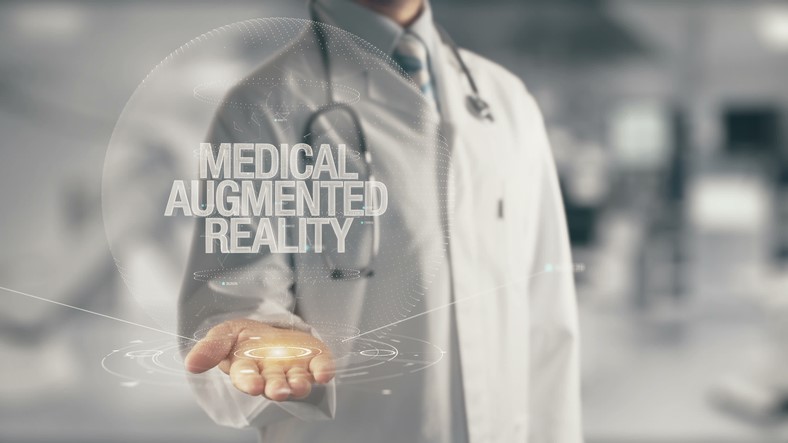Augmented reality is a way to obtain additional information about a situation using special apps, headsets, or goggles. Unlike virtual reality, these devices do not project a different world to you but instead, add an extra data layer about the situation you are currently in. Augmented reality has applications in gaming, with the most popular example being Pokémon Go – as well as other industries.
Additional applications include marketing, with apps that allow you to visualize 3D projections of potential purchases or learn more about an item by scanning it with a camera. One field where augmented reality is proving useful is healthcare. Several projects already exist that are using augmented reality, and many more applications are currently in the research stage. Here are some examples of uses of augmented reality in healthcare.
Overlaid Diagnostics
According to an article from The Smithsonian, a lab called the Augmentarium at the University of Maryland is developing a unique tool for doctors and surgeons. This tool uses custom software with the Microsoft HoloLens to project diagnostic images for a surgeon to see while they are interacting with patients or performing surgery. Surgeons can focus on the patient and not look away for additional information, which saves critical time.
Holographic Navigation Platform
A company called Scopis has a similar tool called the Holographic Navigation Platform, described at the Medical Augmented Reality blog. The tool also uses the Microsoft HoloLens. Healthcare professionals can work with a 3D holographic representation of a part of a patient’s body, such as the spine. Prior to surgery, they can make detailed plans with this representation, like deciding how to position screws. During the surgery, the holographic representation projects an image on the spine, and sensors help the surgeon pick the exact angle and location for actual insertion of the screw.
Proximie App
The Proximie App lets medical professionals stream video of their procedures and share information with other professionals. It is ideal for when an expert cannot attend a procedure, but their input is still essential. Watching the stream remotely, this expert can make annotations in the video, including text, images, and links to other videos, to suggest how to continue with the procedure. The app is also helpful for training medical students. Instead of just watching a procedure in person, by watching through the Proximie App, they will have access to extra learning material associated with it provided by their teachers.
Prosthesis Training
A post on the MDDI website describes a system for helping amputees learn how to use an arm or hand prosthesis using augmented reality. The system is from the Interactive Media Systems Group at the Vienna Institute of Technology. It uses the Oculus Rift in addition to special sensors to detect motion and muscle movement in the patient’s arm. With the headset on, a patient sees a field of balls as well as an arm and hand representing their prosthetic. They learn to control how it moves as well as how to grasp and release using the muscles in the arm that it connects to. A patient can learn how to coordinate their movements and use different levels of force when grasping an object.
These are just four examples of ways augmented reality is useful for the healthcare field. There are many more applications, including systems to help nurses accurately see veins, tools to help autistic children learn to interact with people, and apps to help people regulate their emotional and physical health.
The Medical Augmented Reality blog provides more examples of healthcare applications. Another source of information on the topic is this blog post from MDDI online. In the near future, other creative applications of augmented reality will help the healthcare field progress in new, unexpected ways. For more information on uses of augmented reality in healthcare and other fields, please contact us.
Majid Abai – September 2017 – Los Angeles.
———————————————————–
About The Author:
Majid Abai is Managing Director of Concepts Rise (www.ConceptsRise.com), a High-Technology and Innovation Consultancy based in Los Angeles, CA, USA. With over 30 years of experience in supporting US and global organizations, Mr. Abai focuses on strategic and tactical approach to use of innovation and technology to increase revenues and reduce costs for organizations. Majid could be reached at 424-320-0524 or via email at majid.abai@ConceptsRise.com.

